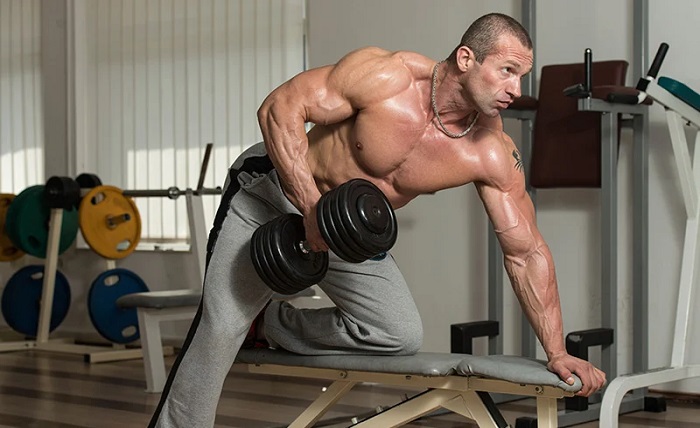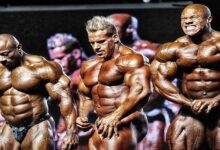Pump Training: Building Muscle and Strength with Resistance Training

A Guide to Effective Pump Training Techniques for Beginners and Advanced Lifters
Resistance training, also known as strength or weight training, is a popular form of exercise that involves lifting weights or using resistance bands to build muscle and strength. One of the key goals of resistance training is to achieve a “pump,” a temporary increase in muscle size and vascularity that occurs during and immediately after a workout. Pump training is a popular technique used by bodybuilders and fitness enthusiasts to achieve a more defined and muscular physique.
In this article, we will explore the concept of pump training, including what it is, how it works, and some effective techniques for beginners and advanced lifters. Whether you are new to resistance training or a seasoned pro, this guide will help you maximize your gains and achieve the best possible results.
What is Pump Training?
Pump training is a technique that involves performing high-volume, moderate-to-high intensity resistance exercises with short rest periods in order to achieve a temporary increase in muscle size and vascularity. The term “pump” refers to the feeling of fullness and tightness in the muscles that occurs during and after a workout, as blood rushes to the muscles to supply oxygen and nutrients.
Pump training is based on the principle of muscle hypertrophy, which is the process of increasing muscle size and strength through progressive overload. Progressive overload involves gradually increasing the amount of weight, reps, or sets performed during a workout in order to stimulate muscle growth and adaptation.
Pump training is often used by bodybuilders and fitness enthusiasts as a way to achieve a more muscular and defined physique, as the temporary increase in muscle size and vascularity can help to accentuate muscle definition and separation.
How Does Pump Training Work?
Pump training works by causing a temporary increase in blood flow and metabolic stress to the muscles, which stimulates muscle growth and adaptation. When you perform resistance exercises, your muscles contract and create tension, which causes tiny tears in the muscle fibers. These tears signal the body to repair and rebuild the muscles, which results in an increase in muscle size and strength over time.
When you perform high-volume, moderate-to-high intensity resistance exercises with short rest periods, you create a metabolic stress on the muscles that increases blood flow and promotes the release of growth factors and hormones that support muscle growth and adaptation. This metabolic stress also causes a buildup of lactic acid in the muscles, which contributes to the feeling of “burn” and fatigue that is often associated with pump training.
In addition to promoting muscle growth and adaptation, pump training can also help to increase muscular endurance and improve cardiovascular fitness, as the high volume of reps and short rest periods place a greater demand on the cardiovascular system.
Effective Pump Training Techniques for Beginners
If you are new to resistance training, it is important to start with a program that is appropriate for your fitness level and goals. Here are some effective pump training techniques for beginners:
- Full-Body Workouts: Full-body workouts are a great way to build a foundation of strength and muscle mass. By working all major muscle groups in a single workout, you can stimulate muscle growth and adaptation throughout your entire body.
- Compound Exercises: Compound exercises are exercises that work multiple muscle groups at once, such as squats, deadlifts, bench press, and pull-ups. These exercises are great for beginners because they allow you to lift heavier weights and work multiple muscle groups at once, which can help you to build strength and muscle mass more quickly.
- High-Volume, Moderate-to-High Intensity: As a beginner, it is important to focus on building a base of strength and endurance. This can be achieved by performing high-volume, moderate-to-high intensity workouts with short rest periods.
- Rest and Recovery: While it is important to challenge yourself during your workouts, it is equally important to allow your body to rest and recover between workouts. Aim to take at least one day off between workouts, and prioritize getting enough sleep, hydration, and nutrition to support your recovery.
- Progressive Overload: As you become more comfortable with resistance training, it is important to gradually increase the amount of weight, reps, or sets you perform in order to continue challenging your muscles and promoting muscle growth and adaptation.
Effective Pump Training Techniques for Advanced Lifters
If you are an experienced lifter, you may need to adjust your training program in order to continue making progress and achieving your goals. Here are some effective pump training techniques for advanced lifters:
- Split Workouts: Split workouts involve working different muscle groups on different days, such as a chest and triceps day, a back and biceps day, and a leg day. This allows you to focus more intensely on each muscle group and perform a greater variety of exercises.
- Isolation Exercises: Isolation exercises are exercises that target a specific muscle group, such as bicep curls or tricep extensions. These exercises can be used to target weaker or less developed muscle groups and help to create a more balanced and symmetrical physique.
- High-Intensity Techniques: High-intensity techniques, such as drop sets, supersets, and rest-pause sets, can help to increase the intensity of your workouts and promote muscle growth and adaptation.
- Deload Weeks: Deload weeks involve reducing the volume and intensity of your workouts in order to allow your body to recover and prevent overtraining. This can be a useful technique for advanced lifters who are training at a high volume and intensity and may be at risk of injury or burnout.
Pump training is a popular technique used by bodybuilders and fitness enthusiasts to achieve a more defined and muscular physique. By performing high-volume, moderate-to-high intensity resistance exercises with short rest periods, you can create a temporary increase in muscle size and vascularity that can help to accentuate muscle definition and separation.
Whether you are a beginner or an experienced lifter, pump training can be an effective way to achieve your fitness goals and maximize your gains. By following a structured training program that incorporates the principles of progressive overload, rest and recovery, and effective exercise selection, you can build strength and muscle mass, improve your overall fitness, and achieve the physique you desire.


